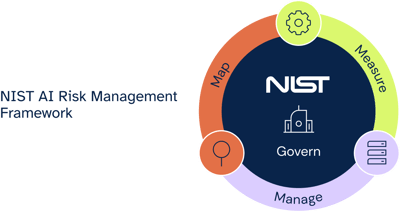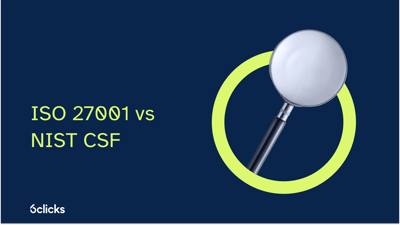Every business today faces threat from cybercrime. Protecting the business and its assets from security threats in the digital world is fast becoming one of the top priorities. NIST CSF is a trusted framework for addressing cybersecurity.
NIST CSF is a cybersecurity framework developed in 2014 by the National Institute of Standards and Technology (NIST). It was designed for protecting critical infrastructure in the U.S. federal government. However, due to its comprehensive approach to cybersecurity, it has been adopted by organisations all over the world across various industries.
Below are some frequently asked questions about NIST CSF and their answers.
Is NIST cybersecurity framework compliance mandatory?
NIST CSF is made mandatory only for U.S. federal government agencies. It is voluntary for any other industry. However, the reason why the framework is widely used is that it gives a strong foundation to the cybersecurity posture of any organisation. NIST CSF provides guidelines to identify, protect, detect, respond, and recover from a cybersecurity event. All these are actions that take care of any gaps in your existing cybersecurity program.
Which companies use NIST cybersecurity framework?
NIST CSF is used by businesses all over the world across different industries. It is used by small and medium businesses as well as by large enterprises and government agencies. A few examples of organisations that have adopted NISST CSF include Microsoft, Boeing, Bank of England, Intel, and JP Morgan Chase.
How does an organisation benefit from NIST CSF?
NIST CSF enables an organisation to better understand their cybersecurity risks and take actions to manage and mitigate the risks. It also helps in identifying the important processes that are critical to the business and for service delivery, thus ensuring continued business operations. Most importantly, NIST CSF improves the communication, understanding, and awareness about cybersecurity throughout the organisation helping develop a risk-resilient work culture.
Does NIST CSF apply to organisations with a good cybersecurity posture?
Any organisation, whether with a mature cybersecurity posture or not, benefits from adopting NIST CSF. The framework helps to identify the gaps in existing cybersecurity strategy, aligned with business goals and priorities, to help organisations achieve complete 360-degree cybersecurity.
Does NIST CSF help in budgeting for cybersecurity activities?
Yes. The framework helps identify the activities that are critical to the business and service delivery, thus helping to prioritise expenditure on those activities to ensure continued business operations.
Is NIST CSF applicable only to the IT department in an organisation?
No. NIST framework for cybersecurity can be applied to the entire organisation and is not limited only to the IT Department. In fact, the complete benefits of the framework can only be realised when it is adopted throughout the organisation. The framework is adaptable for every operational unit of an organisation. It also fosters an understanding of cybersecurity and effective communication from the C-suite to the personnel in individual departments and external vendors or partners, thus helping build a comprehensive cybersecurity strategy, inclusive of all departments and stakeholders.
How long does it take to implement the NIST cybersecurity framework?
The cybersecurity needs of every organisation are different and so is the time taken by them to implement NIST CSF. It can take anywhere from a few weeks to several years to completely adopt the framework depending on the business needs and current cybersecurity maturity. The framework helps organisations determine the steps to reach the desired level of cybersecurity from the current state and have a realistic plan and schedule for adoption.
What is the role of the C-suite and board members in adopting NIST CSF?
The framework with its well-defined activities and outcomes is ideal for the senior executives to understand and track. Since effective cybersecurity requires communication from the senior leadership down to the independent departments and units, the framework is fitting.
Does NIST CSF need any specific tools?
No. NIST CSF does not mandate the use of any specific tools or technologies. The framework is flexible and is based on outcomes. An organisation can choose to use the tools and products they find relevant to its cybersecurity goals. This flexibility also makes way for technological innovation by keeping the focus on outcomes without mandating a specific technology.
Has NIST CSF changed over the years?
NIST CSF was first developed in 2014. Since then, it has been updated with new guidelines that keep up with the changing needs of cybersecurity. In 2018, NIST CSF 1.1 was released. The new version had revisions based on the feedback from stakeholders and the cybersecurity trends. NIST CSF 2.0 is the latest version that started taking shape in February 2022. It had its first workshop in August 2022.
Do you need to wait for NIST CSF 2.0 or should the previous version be adopted?
NIST CSF 2.0 will take some time to be fully launched and active. Until then, it is advisable to implement NIST CSF 1.1. As for transitioning to the new version when the time comes, NIST will consider backward compatibility. Read more about NIST CSF 2.0: What do we know about NIST CSF 2.0?
How to achieve NIST CSF compliance?
The first step to NIST CSF compliance is to assess your cybersecurity posture. This will help you identify a plan for adopting the framework and achieving compliance. The 6clicks platform has integrated NIST CSF controls along with other standards, frameworks, and regulations. This helps you chalk out the shortest and easiest route to compliance. Check out more on our NIST CSF solutions page.
Completing assessments, adopting frameworks, achieving compliance, and moving towards robust cybersecurity are made easy with automation, AI, and a user-friendly interface at 6clicks. It’s the only platform you will ever need for all your cybersecurity and GRC needs.
Written by Dr. Heather Buker
Heather has been a technical SME in the cybersecurity field her entire career from developing cybersecurity software to consulting, service delivery, architecting, and product management across most industry verticals. An engineer by trade, Heather specializes in translating business needs and facilitating solutions to complex cyber and GRC use cases with technology. Heather has a Bachelors in Computer Engineering, Masters in Engineering Management, and a Doctorate in Information Technology with a specialization in information assurance and cybersecurity.












